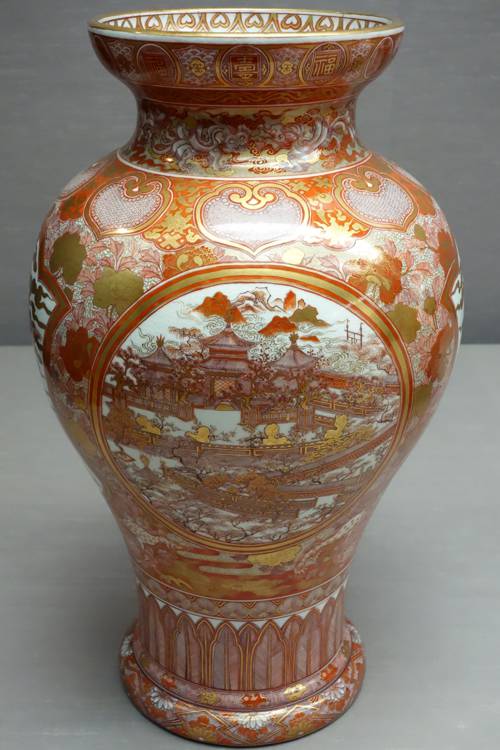
FAQ About The Impact of World Expositions on Art and Design

What are world expositions?
World expositions, also known as world fairs, are large international exhibitions designed to showcase the achievements of nations, particularly in terms of art, design, culture, and technology. These events often include exhibits from different countries displaying innovations, new technologies, and cultural achievements. They serve as venues for cultural exchange and global cooperation.

How do world expositions influence art and design?
World expositions serve as platforms for artists and designers to present new ideas and innovations. They encourage the exchange of cultural aesthetics and design principles, often leading to new trends and movements in art and design. By providing a global stage, expositions enable artists and designers to reach a wider audience and draw inspiration from various cultures, which can lead to creative cross-pollination and the development of hybrid artistic styles.

Can you give an example of a significant world exposition and its impact on art and design?
The 1925 International Exposition of Modern Industrial and Decorative Arts in Paris was highly influential. It marked the emergence of the Art Deco movement, characterized by rich colors, bold geometry, and lavish ornamentation. This event showcased the evolution in design, impacting architecture, fashion, and interior design globally. Many of the design principles from this exposition remain influential today.

What role do world expositions play in cultural exchange?
World expositions function as melting pots where diverse cultures can share ideas and innovations. They enable countries to exhibit their unique cultural assets and learn from others, fostering mutual understanding and respect. This cultural exchange often leads to the blending of artistic traditions and design principles, resulting in more universally appealing creations and innovations.

Have world expositions contributed to technological advancements alongside art and design?
Yes, world expositions have historically been platforms for unveiling cutting-edge technologies. Exhibitions like the 1851 Great Exhibition in London and the 1964-65 New York World's Fair introduced influential technological advancements such as the telegraph, elevator, and even early computers alongside artistic displays. The integration of technology with art and design showcased at these events often accelerates the adoption of new technologies into everyday life.

Why are world expositions important for artists and designers?
World expositions provide a significant platform for artists and designers to gain international exposure and recognition. They allow creatives to present their work to an audience that includes industry leaders, potential collaborators, and a diverse public. The expositions also offer opportunities for inspiration by exposing participants to a wide array of global art and design trends and innovations.

Are there any iconic structures that originated from world expositions?
Yes, several iconic structures were originally built for world expositions. Notably, the Eiffel Tower in Paris was constructed for the 1889 World's Fair, and it remains a symbol of architectural innovation. The Atomium in Brussels, designed for the 1958 World's Fair, is another example, reflecting the post-war fascination with scientific progress and atomic energy.

How have world expositions evolved over time?
World expositions have evolved from displays primarily focused on industrial and technological advancements to include comprehensive showcases of art, design, culture, and sustainability. Modern expos often address global challenges such as climate change, sustainability, and digital transformation, reflecting the evolving priorities of society while continuing to inspire innovation across various fields.

What is the legacy of world expositions on global art and design?
World expositions leave behind a legacy of innovation and inspiration in the fields of art and design. They have historically introduced groundbreaking movements like Art Nouveau and Art Deco, while promoting cross-cultural collaborations that have enriched the design landscape. The exchange of ideas at these events has significantly influenced modern design concepts and practices globally.

How do world expositions contribute to urban development?
World expositions often lead to significant urban development and infrastructure improvements in host cities. They necessitate the construction of exhibition spaces, accommodations, transportation networks, and sometimes entire city districts. Many cities utilize these developments long-term, with the exposition sites frequently becoming cultural, commercial, or residential hubs, as seen with the renewal of districts in cities like Paris and Shanghai.

What are some common themes explored in world expositions?
World expositions typically explore themes relevant to contemporary global challenges and aspirations, such as sustainability, cultural diversity, technological innovation, and urban living. These themes reflect the priorities and values of the times, aiming to foster international collaboration and awareness on important issues that impact humanity.

Why are world expositions referred to as "windows to the future"?
World expositions are often called "windows to the future" because they showcase emerging technologies, innovations, and ideas that hint at the direction of human development. They provide a glimpse of potential future lifestyles, trends, and solutions to global challenges, enabling attendees to imagine what possibilities lie ahead in art, design, and technology.

How do world expositions impact global collaboration in art and design?
World expositions act as catalysts for global collaboration by bringing together artists, designers, innovators, and leaders from various countries. These gatherings facilitate networking, sharing of best practices, and formation of partnerships, which can lead to international projects, cross-cultural artistic movements, and collaborative design solutions addressing global challenges.

What kinds of exhibitions are typically seen at world expositions?
World expositions typically host a wide range of exhibitions, including national pavilions showcasing each country's culture and innovations, thematic displays centered on the expo's main theme, and special exhibitions focusing on art, design, and technology. Interactive installations, live demonstrations, and sponsored exhibits from leading corporations and institutions also contribute to the diverse experience at these events.

Can smaller countries benefit from participating in world expositions?
Yes, smaller countries can significantly benefit from participating in world expositions. These events offer a platform to highlight their cultural heritage, innovations, and development potential on an international stage. Participation can enhance a country's global visibility, attract investment and tourism, and foster diplomatic relationships with other nations.

Do world expositions have an environmental impact?
World expositions can have both positive and negative environmental impacts. While they have traditionally led to urban development and increased tourism, potentially contributing to higher resource consumption and waste, recent expos have increasingly focused on sustainability. Modern expos incorporate eco-friendly designs and sustainable practices to minimize their environmental footprint and promote global ecological awareness.

What challenges do organizers face when planning world expositions?
Organizing a world exposition involves challenges such as securing funding, building infrastructure, and ensuring international participation. Cultural sensitivities must be respected while appealing to a global audience. Furthermore, the event must address current global issues creatively and effectively while leaving a lasting positive impact on the host city. Managing these elements requires extensive planning and collaboration.

How do world expositions address global issues and challenges?
World expositions often center around themes that address pressing global issues such as sustainable development, climate change, and technological advancement. By bringing together global leaders, innovators, and thinkers, expos provide a platform for dialogue and solution-finding, highlighting potential ways to tackle these challenges and inspire collective action worldwide.

What is the historical significance of the 1851 Great Exhibition?
The 1851 Great Exhibition, held in London's Crystal Palace, was the first international exhibition of its kind and marked a pivotal moment in showcasing industrial advancements of the time. It heralded the beginning of the modern world's appreciation for technology and design, significantly influencing subsequent international expositions and setting a precedent for global cultural exchange.

How do world expositions support education and knowledge sharing?
World expositions offer extensive opportunities for education and knowledge sharing. They provide platforms for learning through lectures, workshops, and interactive displays, allowing visitors to engage with innovative ideas and cultural insights. These events inspire curiosity and learning, often featuring educational programs that aim to inspire future generations of artists, designers, and innovators.
